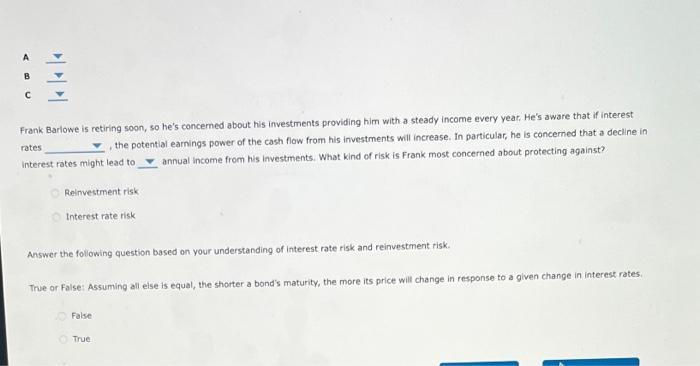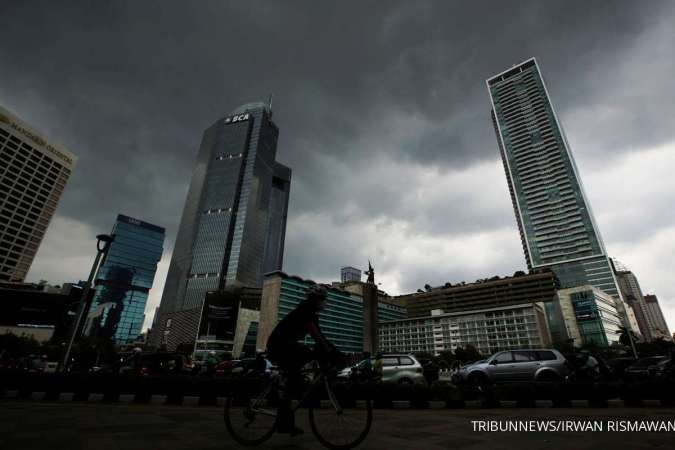Is A Major Bond Crisis Imminent? Understanding The Risks

Table of Contents
Rising Interest Rates and Their Impact on Bond Prices
The Inverse Relationship
The bond market operates on a fundamental inverse relationship between interest rates and bond prices. When interest rates rise, the yields on newly issued bonds increase, making existing bonds with lower coupon payments less attractive. This leads to a decline in the price of existing bonds to match the higher prevailing yields. Conversely, when interest rates fall, bond prices rise.
- Impact on Existing Bond Yields: Rising rates directly affect the yield of existing bonds, making them less competitive compared to newer, higher-yielding bonds.
- Impact on Bond Investors' Returns: For investors holding bonds, rising rates can lead to capital losses if they need to sell their bonds before maturity. Returns from existing bonds become less attractive.
- Potential for Capital Losses: The longer the maturity of a bond, the greater the potential for capital loss during periods of rising interest rates.
- Historical Examples: The rapid interest rate hikes of the early 1980s resulted in significant bond market corrections, demonstrating the powerful impact of interest rate risk on fixed income investments.
Inflation's Erosive Effect on Bond Returns
Real vs. Nominal Returns
Understanding the difference between real and nominal returns is crucial when assessing the impact of inflation on bond investments. Nominal return is the stated return on a bond, while real return accounts for inflation, reflecting the actual increase in purchasing power.
- Unexpected Inflation's Impact: Unexpected inflation significantly erodes the real return of bond investments. If inflation rises faster than the bond's yield, the investor's purchasing power decreases.
- Implications of Persistent Inflation: Persistent high inflation can severely diminish the long-term value of bond investments, making them a less attractive option for preserving capital.
- Inflation-Protected Securities: Inflation-protected securities, such as Treasury Inflation-Protected Securities (TIPS), are designed to mitigate inflation risk by adjusting their principal value based on inflation rates.
Geopolitical Risks and their Influence on Bond Markets
Global Uncertainty
Geopolitical events introduce substantial uncertainty into the bond market. Wars, trade disputes, political instability, and other unforeseen events can trigger dramatic shifts in investor sentiment.
- Flight-to-Safety Phenomenon: During times of geopolitical uncertainty, investors often seek the safety of government bonds, leading to increased demand and higher prices for these assets. This is known as the "flight-to-safety" phenomenon.
- Increased Bond Market Volatility: Geopolitical risks amplify volatility in the bond market, leading to unpredictable price swings and increased investment risk.
- Past Geopolitical Events: The 2014 Russian annexation of Crimea and the 2008 global financial crisis are examples of geopolitical events that significantly impacted global bond markets.
Assessing the Likelihood of a Major Bond Crisis
Analyzing Key Indicators
Several key economic indicators can help assess the probability of a major bond market crisis. Careful analysis of these indicators provides a more comprehensive understanding of potential risks.
- Credit Spreads: Widening credit spreads, indicating increased risk in corporate and sovereign debt markets, signal potential stress in the financial system.
- Sovereign Debt Ratings: Downgrades in sovereign debt ratings reflect growing concerns about a country's ability to repay its debts, increasing the risk of default and impacting investor confidence.
- Central Bank Policies: Central bank actions, such as interest rate changes and quantitative easing programs, play a significant role in influencing bond market stability. Analyzing their policies is essential for risk assessment.
Conclusion
The potential for a major bond crisis stems from the convergence of several significant risks: rising interest rates eroding bond prices, inflation's impact on real returns, and the ever-present threat of geopolitical uncertainty. Understanding these interconnected risks is crucial for investors. Key takeaways include the need for careful portfolio diversification, a thorough understanding of interest rate risk and inflation risk, and close monitoring of global economic indicators.
Understanding the potential for a bond crisis is crucial for informed investment decisions. Stay informed about the latest developments in the bond market, consider consulting a financial advisor, and adjust your investment strategy accordingly to navigate these complex market conditions.

Featured Posts
-
 Hamas Faces Us Pressure To Accept Gaza Ceasefire Proposal
May 28, 2025
Hamas Faces Us Pressure To Accept Gaza Ceasefire Proposal
May 28, 2025 -
 6000
May 28, 2025
6000
May 28, 2025 -
 Climate Change And More Intense Rainfall Events In Western Massachusetts
May 28, 2025
Climate Change And More Intense Rainfall Events In Western Massachusetts
May 28, 2025 -
 Alcaraz Triumphs In Roland Garros Debut Swiatek Starts Strong
May 28, 2025
Alcaraz Triumphs In Roland Garros Debut Swiatek Starts Strong
May 28, 2025 -
 Cek Cuaca Jawa Tengah Besok 24 April Potensi Hujan
May 28, 2025
Cek Cuaca Jawa Tengah Besok 24 April Potensi Hujan
May 28, 2025
